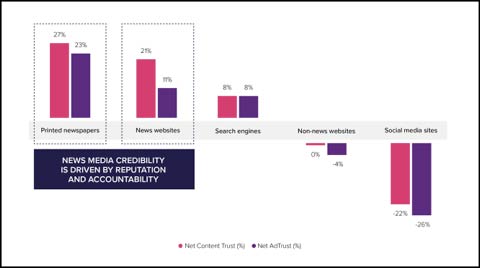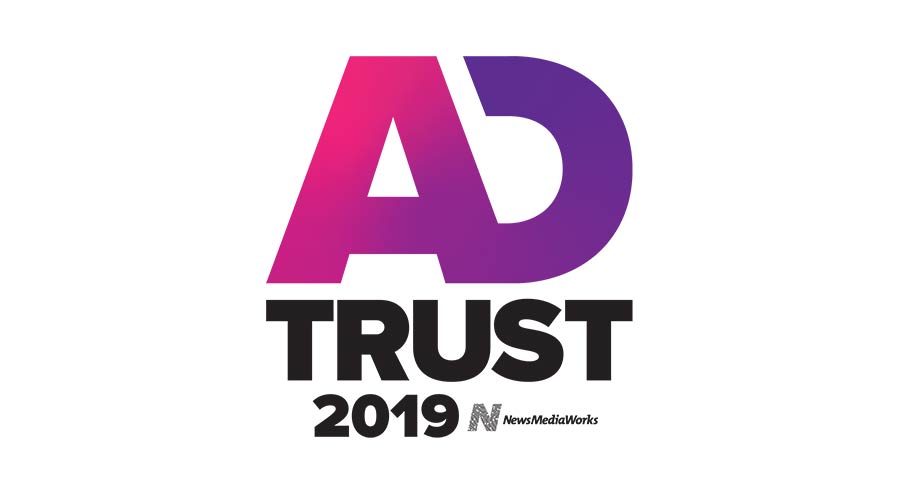Printed newspapers are the most trusted medium for both content and advertising, according to the latest ADTRUST study* conducted by Ipsos Connect.

News media trade group NewsMediaWorks published the findings today:
The study surveyed more than 2,500 Australians and measures consumers’ trust in the content and advertising in the media they consume.
Results are represented as net figures, that is, the percentage of those that trust a medium minus the percentage of those that mistrust a medium.
Consumer trust in the content on social media channels is -22% and trust in ads is at -26%.
At the other end of the spectrum, trust in the content of printed newspapers is +27 and trust in ads is +23%.
News websites were the most trusted digital channel for content and ads at 21% and 11% respectively.
Trust was strong across all newspaper categories and led by regional newspapers at 53% trust in content and 46% trust in ads.
Importantly, the study found that trust drives purchase intent, with almost one in two respondents agreeing that the more they trust an ad, the more likely they are to buy a product or service.
Accountability is an important driver of trust in ads, with consumers recognising that regulation and reputation are key reasons why advertising in a media channel can be trusted.
Consumers consider social media to be unregulated and it was difficult to determine if its content was factual.
“This is the third study into ADTRUST and the findings are clear and consistent – news media dominates as the most trusted media channel for content and advertising. This is driven by the independence and editorial integrity of our news media brands,” NewsMediaWorks CEO, Peter Miller, said.

Peter Miller
“News media stands head and shoulders above all other media channels for trusted, authentic and credible news and information. This is why 94% of Australians^ continue to engage with news media.
“The halo effect to trusted advertising has been proven by the ADTRUST study – trust in content and trust in ads are intermutual in the eyes of consumers. Brands benefit from the company they keep.”
The study found that trust in advertising also changes with age and income, with respondents under the age of 35 having higher trust in all media channels than older users. Younger users, despite being heavier users of digital media, ranked ads in newspapers as the most trustworthy of all media. Those with a higher income were more trusting of ads in newspapers than lower income earners.
Sources: * AdTrust Wave 3 research IPSOS November 2018: Online questionnaire : n= 2503 Australians aged 18+ Nationally representative. Base for Trust metrics is Readers/Users of the respective media aged 18+ : Sample sizes : Search engines, TV, Social media n= 1185 to 987, Radio, Non-news websites, News websites, Outdoor, Mags, Cinema n=870 to 298. The first and second ADTRUST studies were conducted by Galaxy Research. Given the study is not longitudinal, comparison of results is not applicable.
^ emma, 12 months to January 2019. Readership based on last four weeks. Trends compared with 1 month to January 2018. Survey conducted by Ipsos Connect, people 18+, Nielsen Digital Panel, January 2019, People 18+ calibrated to Nielsen Digital Content Ratings data for the equivalent period.
